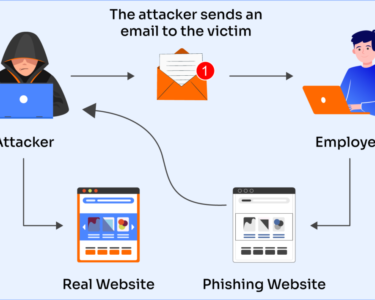
Art of Digital Vigilance in the Cyber Landscape
Introduction:
In the ever-evolving digital landscape, maintaining vigilance is paramount for safeguarding our online presence and protecting our privacy. Digital vigilance encompasses the proactive measures we take to stay informed about cyber threats, identify potential risks, and mitigate their impact. This article delves into the art of digital vigilance, providing practical tips and strategies for staying ahead of cybercriminals.
Understanding Cyber Threats:
The first step in practicing digital vigilance is understanding the nature of cyber threats. Common threats include phishing attacks, malware, ransomware, and identity theft. By recognizing the telltale signs of этих угроз, we can develop strategies to avoid them. For instance, phishing emails typically contain suspicious links or attachments, while malware often manifests as unexpected software downloads or performance issues.
Monitoring Online Activity:
Regularly monitoring our online activity is crucial for detecting suspicious behavior. Keep track of website visits, email communications, and social media interactions to identify any unusual patterns or unauthorized access. If you notice any unrecognized devices connected to your accounts or unfamiliar transactions on your financial records, take immediate action.
Using Strong Passwords and Multi-Factor Authentication:
Strong passwords are the first line of defense against unauthorized access. Avoid using easily guessable passwords such as your name or birthdate. Instead, opt for complex passwords that combine uppercase and lowercase letters, numbers, and special characters. Additionally, enable multi-factor authentication (MFA) for all sensitive accounts. MFA adds an extra layer of security by requiring a second form of identification, such as a text message or authenticator app.
Protecting Devices with Security Software:
Antivirus and anti-malware software are essential for protecting your devices from malware infections. Regularly update these programs to ensure they have the latest protection against emerging threats. Additionally, consider using a firewall to block unauthorized access to your network and a virtual private network (VPN) to encrypt your интернет-соединение when using public Wi-Fi.
Staying Informed about Cyber Threats:
Keeping up with the latest cyber threats is crucial for adapting your defenses accordingly. Subscribe to reputable cybersecurity blogs, follow security experts on social media, and attend industry events to stay informed about emerging trends and vulnerabilities. By staying abreast of the latest threats, you can anticipate potential risks and take proactive measures to mitigate them.
Educating Yourself and Others:
Digital vigilance is not just an individual responsibility; it requires collective efforts. Educate yourself about cybersecurity best practices and share your knowledge with friends, family, and colleagues. By raising awareness, we can create a more vigilant online community that is less susceptible to cyber attacks.
Reporting Suspicious Activities:
If you encounter suspicious emails, websites, or other online activities, don’t hesitate to report them to relevant authorities. By doing so, you can help other users avoid falling victim to the same threats. Contact your security software provider, internet service provider (ISP), or law enforcement agencies to report any potential security risks.
Conclusion:
Digital vigilance is an ongoing practice that requires constant attention and adaptation. By understanding cyber threats, monitoring online activity, implementing strong security measures, staying informed, and educating others, we can create a more secure and resilient digital landscape. Remember, vigilance is not just a passive state but an active pursuit of protection in the face of evolving cyber threats.



